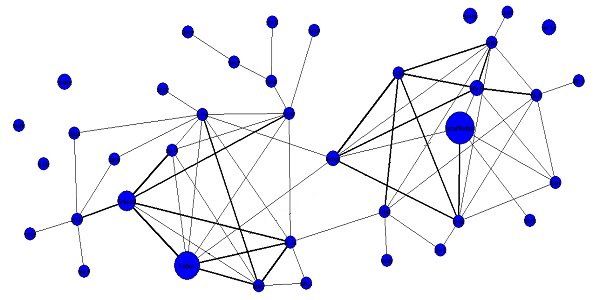One of the projects that she did, which I suppose was trying to prove her suspicion that we were divided into groups down racial lines, was to get us all to write down the names of the three people who we wanted to sit next to the most.
From the data collected, she then generated a sociograph in the hope that it would show how divided we were. It didn't. All it ended up doing was showing that there was a broad gender divide, which was understandable considering that we were all eleven years old and boys and girls tend not to mix at that age, and that as a group we were surprisingly united and connected. Her suspicions that we were divided along lines of race was entirely unfounded; probably because as kids who lived in one of the most multicultural areas of the country, seeing other kids who looked different to ourselves was totally normal.
I make mention of this because political discourse in this country is often seen as being split down lines of class and or race. Is this true though? This is going to sound ridiculous but just like my sixth grade class, it is possible to generate a sociograph of who is connected to who in politics. Also just like my sixth grade class, the various political parties have indicated who they would most like to sit next to in the great classrooms we call the House Of Representatives and the Senate, through their "How To Vote" material.
The first thing that struck me as really weird is that so many parties simply tell the voter to put a 1 in their own box and then just number the other boxes as they like. Either this is done because the parties genuinely want to respect the integrity of the franchise of the voter, or the lack of direction for other preferences is due to apathy or neglect. If it is the latter set of options then this lack of preferences is bad for democracy because it presents less information than which could have been given and also presents a lack of signals as to how they might vote on legislation in the event that they are elected to parliament.
One of the things that emerges from the data is the large number of solitary entities. If this was a primary school classroom, then as a teacher you'd be worried about the children who appear to have no connection to anyone else because these children are more likely to be bullied. In politics though, where the game is essentially adversarial in nature, this poses less of a problem.
It could be that solitary entities tend to be single issue parties; in which case, they don't really have any preferences as to where the preferences go - it's either all or nothing. It could also be that the other parties don't really see them as having much hope at all; if this is true then directing preferences there is a waste of time as far as other parties are concerned.
The other thing which emerges are two broad groups.
One on side are Labor, The Greens, Animal Justice and the Sex Party. On the other are the Liberal/Nationals, Family First, Australian Liberty and Christian Democrat parties.
I don't see that these groups emerge because of some altruistic desire to see these other parties in parliament but rather, are being used as signals to convey the image that they'd like to project about themselves. I find it interesting that if you were to map the parties on the political compass, then the groups show a tendency along the north-south Authoritarian/Libertarian axis as opposed to the west-east Statist/Market axis. The exception appears to be the Liberal Democrats who appear in the How To Vote preference for both the Labor and Liberal parties; having said that, I don't think that David Leonheijlm will be re-elected to the Senate.
The Greens have a tendency to reciprocate preferences being directed in their direction; as does Labor and the Animal Justice Party but the Liberal and Nationals although they are surrounded by a cloud of other parties, do not.
The other two two standouts from the data are the two loners. The Nick Xenophon Group has nobody directing voters to preference them and neither do they direct voters to preference anyone else. The other solitary party is the Jackie Lambie Network which apart from sounding like the name of an insane Tea Party-esque AM radio station which has Khe Sahn and Sounds Of Then on constant repeat, tells people to vote them as 1 and to vote the Liberals last. When you're only required to number either six boxes above the line or twelve boxes below, this instruction seems entirely redundant to me. I personally hope that the people of Tasmania vote for Ms Lambie if for no other reason than her continued comedy podcast from the floor of the Senate.
I don't know what it says about me but my own personal How To Vote Card would be picking parties from opposite ends of the spectrum who aren't even remotely connected in this sociogram.
Usually I don't pay any attention to How To Vote Cards because inside the confines of the ballot box, I take obsessive ownership of my vote and I don't really like to be told who to vote for. However, if we apply the adage that you can tell a lot about someone by the friends that they keep then How To Vote Cards serve as a set of formal signals to tell who aligns with who.


No comments:
Post a Comment